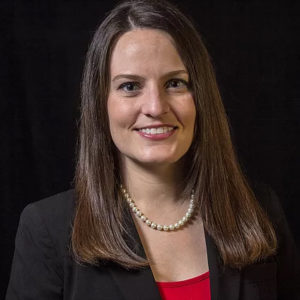Research. It’s the most important aspect of making any kind of life-changing decision. Anyone can conjure up a good idea in their mind. All you need is a little bit of imagination. But, just because you have a great idea doesn’t mean you have the resources to turn it into a reality. That requires planning, and planning requires research.
What I commonly see in the financial services industry is a lack of planning. Advisors working for these big firms watch their colleagues leave and start their own companies, and think to themselves “If they can do it, so can I”. What they don’t realize is how much work goes into making that kind of decision.

If you’re a wirehouse advisor, you probably have healthcare provided by the company. You have a 401(k), stock options, investment platform, HR department, office space, payroll, computer, staff. The list goes on. Should you choose to leave your company, those items become your responsibility. Chances are, you’ve never had to research commercial real estate or recruit your own support staff.
Sure, there are turnkey platforms out there that you can plug into and receive many of the same perks you have now. But how do you decide which option is best for you and the future of your business?
Many advisors only switch firms once or twice in a lifetime. Transitioning a book of business is stressful and time consuming. Wouldn’t it be nice to know you’re making the right decision so you don’t ever need to move again? Remember, you are not the only one affected by your choices. Your clients trust you to keep their best interests at heart in all matters.
So, where do you start? The first step to making a move to independence is figuring out which model best suits your needs.
There are three main types of business models:
Turnkey Independent Model
The Turnkey Independent Model is going to be the closest thing to what you have now. It offers the highest level of advisor support with the least amount of responsibility. Most places offer up-front transition dollars, back office support, compliance, staffing, and more. While self-branding is generally allowed in this model, you are still an employee with a W-2.
There’s some freedom and flexibility when it comes to decision-making, but you do not own your client book of business. Therefore, you are not entitled to broker any sort of deals for yourself on the open market. The Turnkey Independent Model is best suited for advisors who want more freedom than they currently have but are not interested in being true business owners.
Independent Broker Dealer (IBD) Model
The Independent Broker Dealer (IBD) Model still offers advisors a high level of support, but it comes with more responsibility. Some things often provided by the broker dealer are back office support, research, and limited compliance. Advisors are considered 1099 self-employed and may brand themselves however they’d like. In some cases, independent offices exist that advisors can join.
Unlike the Turnkey Independent Model and most wirehouses, IBDs need to provide their own staff, accounting, HR, and payroll. If not joining an existing office, real estate, office furnishings, and other overhead costs are added to the list. The IBD Model is best suited for advisors looking for complete autonomy backed by a reputable establishment.
Registered Investment Advisor (RIA) Model
The Registered Investment Advisor (RIA) Model is the model with the least support. Virtually every aspect of the business is the responsibility of the advisor. While that sounds daunting, it is, by far, the model that can be truly considered “independent”. RIAs have complete control and can charge for additional client services. Some companies offer financial planning, estate planning, tax preparation, or insurance options.
For commission-based business, RIAs have the option of pairing with a “friendly” broker dealer to receive payment for annuities, 529s, etc. Some things to consider when planning to create an RIA are the need for compliance, client billing, technology, staffing, accounting, HR, payroll, marketing, legal, asset management, and more. The RIA Model requires the most amount of research. It is best suited for advisors who long to be a true entrepreneur. The upside potential is unlimited.
Next Steps
Now that you know the basics, you can begin to develop a more structured research plan.
- Start by selecting the model that appeals to you most.
- Come up with a list of questions you want answered.
- Find current companies or advisors who have adopted your preferred model.
- Educate yourself before making any decisions.
Selecting a model is just the first step in your transition to independence. It’s the choice that will determine how you structure your strategy going forward. So, make sure you choose wisely.
For a more detailed transition guide, or to speak with an industry transition consultant with expertise, visit www.advisortransitionservices.com.
Grier L. Rubeling
 Grier is the owner and operator of Advisor Transition Services. She established the company in 2018 after serving 10+ years in the financial industry in various roles.
Grier is the owner and operator of Advisor Transition Services. She established the company in 2018 after serving 10+ years in the financial industry in various roles.
In 2007, after graduating from Virginia Tech with a B.S. in Marketing Management, Grier started her career in Baltimore as a Client Service Associate with Smith Barney. She left in 2008 to transition an advisor’s book of business to UBS Financial Services. The transition process highlighted her abilities to perform under pressure, work efficiently on a strict timeline, and handle difficult situations with poise and professional. The new role gave her the confidence to take on more responsibilities, and she served as a coach to other client service associates and a transition liaison to newly recruited financial advisors.
After moving to North Carolina in 2012, Grier accepted a position in the Raleigh UBS office. In 2013, she, along with two other advisors, left the wirehouse scene and established an RIA, Emerald Investment Partners. Grier served as the Director of Operations and Transition Consultant. During her time at Emerald, she assisted with the transitions of five advisors and consulted on six others.